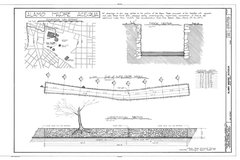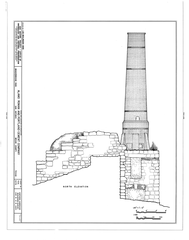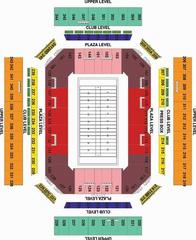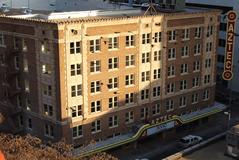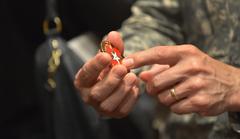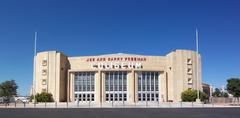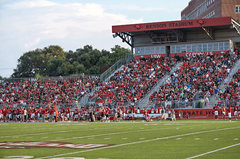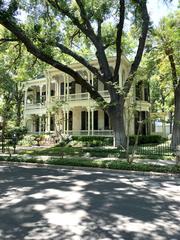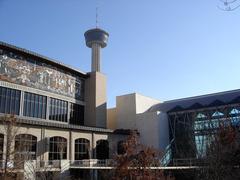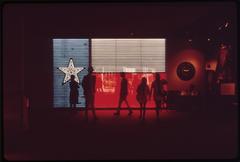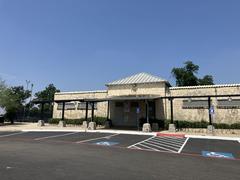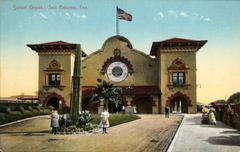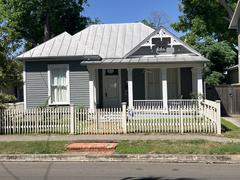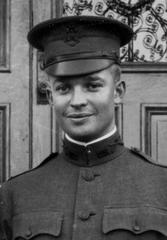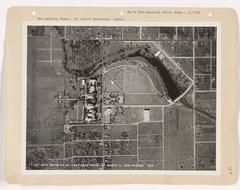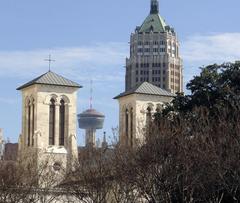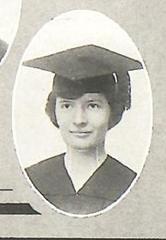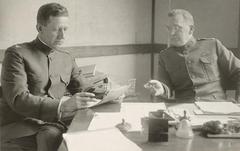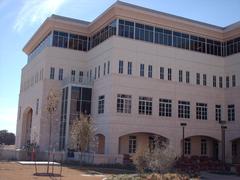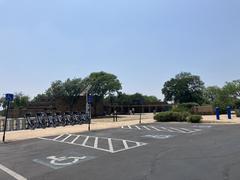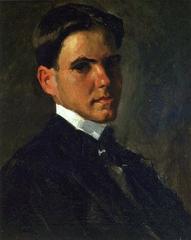San Antonio Japanese Tea Garden: Visiting Hours, Tickets, and Travel Guide
Date: 04/07/2025
Introduction
The San Antonio Japanese Tea Garden, nestled in the heart of Brackenridge Park, is a celebrated cultural landmark and one of San Antonio’s most enchanting historical sites. Once a limestone quarry, the garden was transformed in the early 20th century into a lush oasis featuring winding stone pathways, tranquil koi ponds, picturesque bridges, and traditional Japanese architectural elements. Spearheaded by City Parks Commissioner Ray Lambert and Japanese immigrant artisan Kimi Eizo Jingu, the garden’s creation and evolution tell a story of multicultural collaboration, resilience, and reconciliation—especially poignant considering its wartime history. Today, the garden stands as a symbol of peace, inclusivity, and community spirit, earning recognition as a Texas Civil Engineering Landmark, a Registered Texas Historic Landmark, and a listing on the National Register of Historic Places.
This comprehensive guide covers the garden’s history, cultural significance, visiting hours, accessibility, travel tips, and practical recommendations. Whether you’re seeking a peaceful retreat, an educational outing, or a memorable family experience, the San Antonio Japanese Tea Garden offers something for everyone.
For current events, guided tours, and up-to-date visitor information, see the City of San Antonio’s official Japanese Tea Garden website and the San Antonio Parks Foundation.
Table of Contents
- Introduction
- History and Transformation
- Visiting Information
- Garden Experience
- Travel Tips and Nearby Attractions
- Frequently Asked Questions (FAQ)
- Notable Milestones
- Summary and Recommendations
- References
History and Transformation
From Quarry to Garden
The site that is now the Japanese Tea Garden began as a limestone quarry operated by the Alamo Cement Company from the 1880s until the early 20th century (TravelGumbo). In 1915, the City of San Antonio acquired land adjacent to the abandoned quarry, and City Parks Commissioner Ray Lambert envisioned converting the site into a public garden. Utilizing prison labor and donated materials, Lambert and engineer W.S. Delery designed an Oriental-style garden with winding stone paths, bridges, and a dramatic entrance made of local stone. The garden officially opened to the public in 1920 (Densho Encyclopedia).
The Jingu Family’s Legacy
To enhance the garden’s authenticity, Lambert invited Kimi Eizo Jingu, a Japanese immigrant and skilled artist, to live on-site and oversee garden operations. Along with his wife Alice Miyoshi Jingu and their children, the Jingu family ran the Bamboo Garden restaurant and became central to the garden’s early success, offering visitors traditional Japanese hospitality and cultural experiences (Densho Encyclopedia). Their involvement helped establish the garden as a beloved destination, blending Japanese aesthetics with local Texan influences.
Wartime Changes and Restoration
The outbreak of World War II and the Pearl Harbor attack in 1941 brought significant challenges. Rising anti-Japanese sentiment led the city to evict the Jingu family and rename the site the “Chinese Tea Garden.” Artist Dionicio Rodriguez crafted a new entrance sign, and the garden’s stewardship was taken over by the Wu family, Chinese American friends of the Jingus. The postwar years saw the garden fall into neglect, but efforts in the 1970s and 1980s—spearheaded by local leaders and the Japanese American community—resulted in the restoration of its original name and renewed recognition of its cultural heritage (Densho Encyclopedia; TravelGumbo).
Modern Revitalization
Major restoration projects between 2005 and 2011 revitalized the garden’s ponds, stonework, and landscaping, culminating in the reopening of the historic Jingu House as a modern café. Today, the Japanese Tea Garden is celebrated as a Texas Civil Engineering Landmark and a Registered Texas Historic Landmark, included on the National Register of Historic Places (TravelGumbo). Ongoing stewardship by the San Antonio Parks Foundation ensures its preservation and continued community engagement.
Visiting Information
Hours, Admission, and Accessibility
- Hours: Open daily from 7:00 AM to 5:00 PM (dawn to dusk; hours may extend to 7:00 PM during certain seasons)
- Admission: Free; no tickets required (donations appreciated)
- Accessibility: The garden features a 0.3-mile paved loop, ramps for wheelchair access (upper garden and pavilion), and accessible restrooms. The lower garden is accessed by stairs.
- Pets: Leashed dogs and service animals are welcome in outdoor areas.
Directions and Parking
- Address: 3853 N St. Mary’s St., San Antonio, TX 78212
- Parking: Free parking at Brackenridge Park and additional paid options nearby. Bike racks and public transport (VIA Metropolitan Transit) serve the park.
- Proximity: The garden is adjacent to the San Antonio Zoo, Witte Museum, and other Brackenridge Park attractions.
Amenities and Dining
- Jingu House Café: Offers teas, light bites, bento boxes, and beverages. Outdoor seating overlooks the garden. No reservations required, but weekends can be busy.
- Restrooms: Available on-site.
- Event Rentals: The pavilion and upper garden areas can be reserved for weddings and special events after hours.
Garden Experience
Layout and Design Features
The garden is renowned for its harmonious blend of Japanese and Texan elements. Winding stone pathways, arched bridges, and a dramatic 60-foot waterfall create a tranquil atmosphere. The upper garden and pavilion (with a signature palm-thatch-style roof, now replaced with fire-safe material) offer gathering spaces, while the lower garden is more secluded and lush.
Flora and Fauna
A diverse array of native and Asian-inspired plant species provides color and texture throughout the year: cherry blossoms, azaleas, lilies, Texas sage, green mound juniper, esperanza, crape myrtle, mountain laurel, Amazonian lily pads, and bird of paradise. Koi ponds are home to vibrant fish, and seasonal blooms make the garden especially beautiful in spring and autumn (NAJGA).
Cultural and Community Events
The garden hosts a range of events, including:
- Cherry Blossom Festival: Traditional music, dance, and food
- Jazz in the Garden: Free concerts with local performers (San Antonio Report)
- Guided Tours: Offered periodically, with interpretive signage throughout (San Antonio Happens)
- Educational Programs: For school groups and adults, focusing on Japanese culture, horticulture, and landscape architecture
Photography and Artistic Inspiration
With its picturesque bridges, waterfall, and lush gardens, the Japanese Tea Garden is a favorite for photographers and artists. Early morning and late afternoon provide the best light. Casual photography is permitted (no permit needed); however, tripods and flash are not allowed to ensure visitor enjoyment.
Travel Tips and Nearby Attractions
- Best Times to Visit: February through April for mild temperatures and spring blooms; early morning or late afternoon for fewer crowds and optimal photography
- What to Bring: Comfortable shoes, sun protection, water, and a camera
- Etiquette: Stay on paths, supervise children, leash pets, and respect the garden’s peaceful atmosphere
- Nearby Attractions: San Antonio Zoo, Witte Museum, Brackenridge Park Golf Course, and the River Walk
Frequently Asked Questions (FAQ)
Q: What are the San Antonio Japanese Tea Garden visiting hours?
A: Daily from 7:00 AM to 5:00 PM (may vary by season).
Q: Is there an admission fee or are tickets required?
A: Entry is free; no tickets required.
Q: Are pets allowed?
A: Yes, leashed dogs and service animals are welcome.
Q: Is the garden wheelchair accessible?
A: Yes, the upper garden and pavilion are accessible via ramps; the lower garden requires stairs.
Q: Can I take photos in the garden?
A: Casual photography is welcome. Tripods and flash are not allowed.
Q: Are guided tours available?
A: Yes, guided tours and educational programs are offered. Check the official website for schedules.
Notable Milestones
- 1915: Land acquired for garden
- 1917–1920s: Quarry transformed into Japanese-style garden
- 1942: Renamed “Chinese Tea Garden” during WWII
- 1984: Original name restored
- 2004: Listed on National Register of Historic Places
- 2005–2011: Major restoration and reopening
Summary and Recommendations
The San Antonio Japanese Tea Garden is a testament to cultural harmony, historical resilience, and community spirit. Its transformation from a quarry to a lush Japanese-style retreat showcases the power of collaboration and the enduring legacy of the Jingu family and Japanese American community. Free and accessible to all, the garden is a must-visit for history buffs, nature lovers, families, and cultural explorers. Combine your visit with nearby Brackenridge Park attractions, attend seasonal events like the Cherry Blossom Festival, and consider a guided tour for deeper insight.
For ongoing updates, event schedules, and visitor resources, visit the City of San Antonio’s official website and the San Antonio Parks Foundation. Enhance your experience with the Audiala mobile app for self-guided tours and insider tips.
Plan your visit today and immerse yourself in one of San Antonio’s most treasured historical and cultural sites.
References
- San Antonio Japanese Tea Garden: Visiting Hours, Tickets, and Historical Insights, 2024 (TravelGumbo)
- San Antonio Japanese Tea Garden - Densho Encyclopedia, 2024 (Densho Encyclopedia)
- The Ultimate Guide to Visiting the San Antonio Japanese Tea Garden: History, Culture, and Practical Tips, 2024 (San Antonio Happens)
- San Antonio Japanese Tea Garden: Visiting Hours, Tickets, and Top Attractions, 2024
- San Antonio Japanese Tea Garden Visiting Hours, Tickets, and Highlights: A Complete Visitor’s Guide, 2024 (San Antonio Things To Do)
- Secret Attractions
- San Antonio Report
- NAJGA
- Brackenridge Park Conservancy

